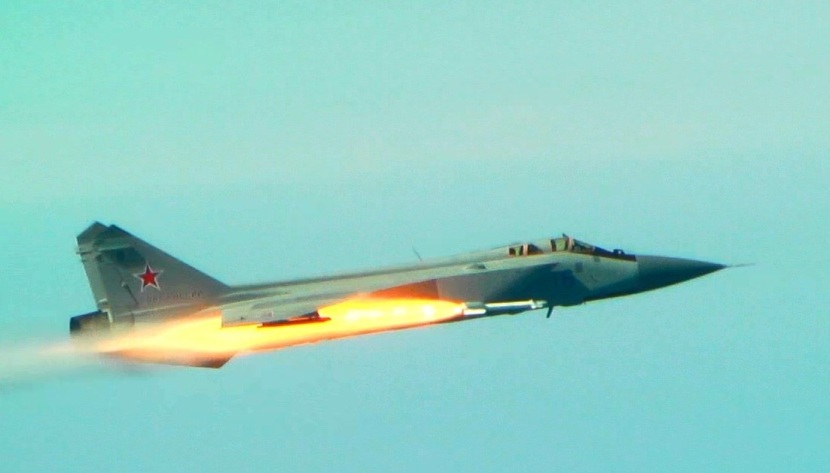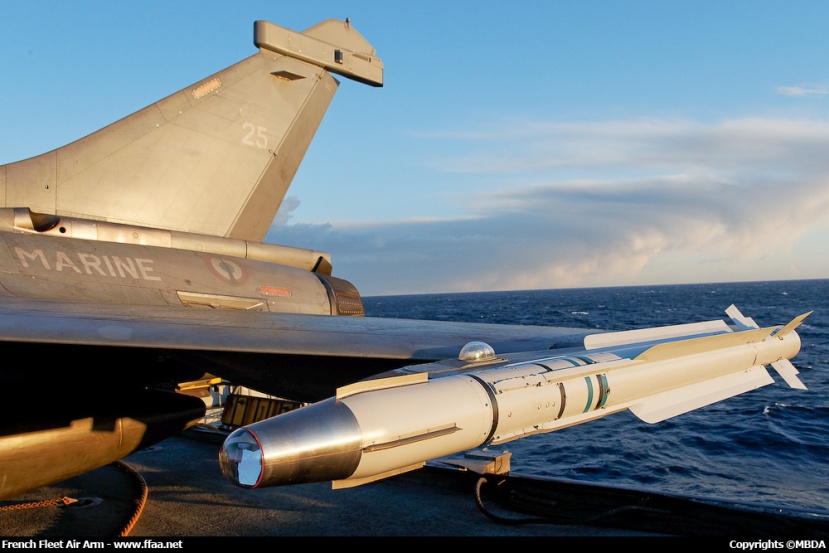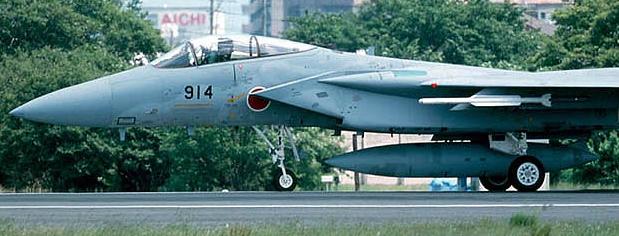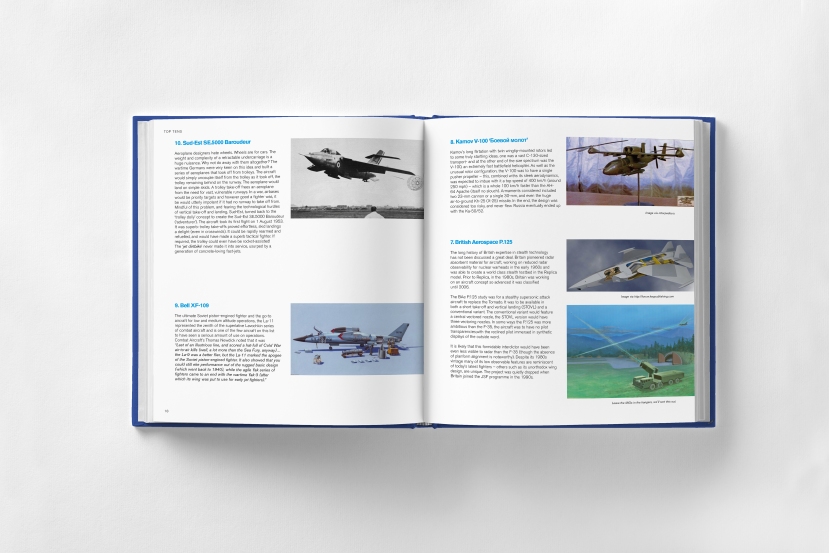Ten best air-to-to-air missiles (short range)

Modern heat-seeking missiles are particularly nasty weapons. Long-ranged, fast, accurate and hard to fool – facing them is a sobering prospect for the modern fighter pilot. As the age of stealth fast approaches (and digital radar jammers become more effective), radar-guided missiles will become less important – the greatest air-to-air hazard to the next generation of fighters will come from the following ten weapons. Actual weapon parameters are classified, information is from best available public sources.
No classified information has been included. Usual limitations of the top ten format apply so don’t get angry.
Save the Hush-Kit blog. Our site is absolutely free and we have no advertisements. If you’ve enjoyed an article you can donate here. Your donations keep this going. Thank you.
Terms used:
LOAL: Not to be confused with LOL (laugh out loud), LOAL means Lock On After Launch. Traditionally infra-red guided missiles would lock-on (the start of the automatic tracking of a target) before the weapon was launched. Modern missiles can be launched blind allowing them to take cues from other remote sensors via datalink- this can enable them to hit targets at extreme angles, such as behind the aircraft (firing a missile at target in the rear hemisphere is a ‘Parthian’ or ‘over-the-shoulder’ shot).
Imaging: The infra-red seeker heads that ‘see’ the heat of the target used to ‘see’ a blob of different temperatures. Today, thanks to imaging technology, they can interpret the different parts of a target aircraft- so imaging seekerheads are hard to fool with hot flares (a traditional countermeasure) and tend not to be distracted by the sun. All the following missiles have imaging seekerheads apart from the legacy R-73.
10. Denel Dynamics A-Darter ‘Boer constrictor‘

When this South African missile is truly operational it will deserve a place in the top five -as it is an exceptionally potent weapon. A unique feature is that it is virtually smokeless- a real boon as the trail of a missile is often what alerts pilots to a missile’s presence. This is because, unlike most other air-to-air missiles, there is no aluminium used in its rocket propellant.The A-Darter is long-ranged compared to 4th generation weapons, with a powerful motor, and has an impressive 90-degree look angle. LOAL over-the-shoulder shots will be possible, and it is reported that some SAAF Gripen pilots believe it has advantages over the highly-respected IRIS-T. It is only a lack of maturity that loses the A-Darter a higher position- it remains to be seen whether it gains this maturity and true operational status.
9. Vympel R-73 ‘Peri-striker’

High off-foresight abilities and helmet-cued: The Soviet R-73 defined the modern air-to-air missile. When the German Luftwaffe inherited a load of R-73s from the East German air force, the test results were mortifying. A MiG-29 with R-73s and the simple but effective Schmel helmet-cueing system were virtually unbeatable in within-visual range fights. Cueing a target by simply looking at was a huge advantage, and this was combined with the ability to fire the missile across a much wider cone (it could be fired to the side of the aircraft) than the then ubiquitous AIM-9L/M – this created a very effective weapon system. The missile is large with a powerful motor gifting the R-73 with superior kinematics. It was the first missile to include thrust vectoring, giving it astonishing manoeuvrability. Formidable in its time, it has now been eclipsed by a generation of weapons created to counter it, but retains a robust high-off boresight capability.
8. MBDA MICA IR ‘Jacques of all trades’

The French MICA is unique among Western missiles in being available in both infra-red- and radar-guided variants. MICA, which entered service in 1996, was the first Western air-to-air missile to use thrust vectoring (the infra-red variant was operational from 2000, three years ahead of the US’ AIM-9X). It has replaced both short-range (Magic) and medium-range (Super 530) weapons – in doing so it has anticipated the move of IR missiles into the beyond-visual range, but compromises have being made in making it a jack of trades: it is neither as manoeuvrable as the IRIS-T at short ranges, nor as fast (though it is very fast for some of its mission, peaking at a remarkable Mach 4) and lethal at medium ranges as a late AMRAAM. On the Rafale, the MICA IR can provide IR imagery to the central data processing system, thus acting as an extremely useful extra sensor. The MICA IR was one of the more controversial entries discussed by our panel- some pointed to France’s historical track record of producing poor air-to-air missiles (a highly contentious point in itself), while some noted MBDA (and France’s) current excellence in electronics as evidenced on many systems on Rafale; MBDA is considered by some to be the most experienced missile house in the world. The MICA is a fast and manoeuvrable missile at short ranges with lock-on after launch capabilities, and in 2007 became the first operational missile to demonstrate a Parthian over-the-shoulder shot. It loses a higher placing as is not believed to have a mature integration with a helmet cueing system- when it does, it is likely to be with IAF Mirage 2000s.
7. China Air-to-Air Guided Missile Research Institute PL-10 ‘Iris stew’

The PL-10 uses the broad-chord narrow-span wing and TVC configuration that has become common for modern IR AAMs. The missile is fitted with an imaging infra-red seeker capable of +/-90 degree off boresight angles. Considering the missile’s timeline – the project started in 2004- it should be a very capable weapon. As it is intended for use with stealthy aircraft, notably the J-20, it is likely to have LOAL capabilities with datalink connectivity. Little is known about it at the moment. Intriguingly, J-20 appears to have a ‘dogfight mode’ where the missile is moves to an external position to give its seeker a view of the outside world, while doors close behind it to minimise radar returns from the weapon bay cavity.

6. Vympel R-74M ‘Robin Hoodski‘

Russia’s R-73 (NATO reporting name AA-11 ‘Archer’) is one of the best-known air-to-air missiles. It is in large-scale service, has seen combat, and its appearance in the early 1980s drove the development of an array of Western counterparts.
Less publicised is this missile’s intended successor, or RVV-MD (meaning short-range air-to-air missile), which entered service with the Russian Air Force in 2012 and is rumoured to have been deployed in Syria: since it’s almost identical to the R-73, this is hard to verify. On service entry, the missile designation switched from the developmental K-74M to the in-service R-74M.
Work on the R-74M actually began around the time the ‘Archer’ was entering service, and it was originally intended for rearwards launch to defend the hemisphere behind the launch aircraft. This mode was tested, but never properly refined, and was abandoned in the mid-1990s.
However, development of the missile continued for conventional launch. This yielded the R-74M, which allies the R-73 aerodynamics and motor with a new two-band infrared seeker that increases off-bore-sight angles to +/-60 and extends acquisition range to 15-20km. Russia also worked on an all-new short-range air-to-air missile, the K-30 project, but this fell by the wayside.
Since Russia’s relations with Ukraine broke down, a new source of seeker was required for the R-74M, and, after some delay, production was supposed to switch to Radiozavod this year. Meanwhile, the prime contractor for the missile is Vympel, who also built the R-73.
Work is now under way on an improved K-74M2, primarily to arm the PAK FA fighter. This is adapted for launch from internal weapons bays and has a new seeker and rocket motor. Adding a datalink means it will have a lock-on-after-launch mode (its lack of LOAL is one reason it is does not rank higher in this list). The new version is now reportedly undergoing flight test.
– Thomas Newdick, Deputy Editor, Combat Aircraft Magazine – Follow him on Twitter @CombatAir
5. Mitsubishi AAM-5B ‘Mitsubishi Pistachio-crusher’

Seldom discussed is the Japanese AAM-5B. Like most 5th generation AAMs it has broad chord wings, thrust-vectoring and an imaging seeker. Entering service in 2004 the AAM-5 is one of the most modern weapons on this list, and considering Japan’s excellence in the electronics field it is likely that this is an extremely capable weapon. Due to a ban on the export of weapons, relatively few AAM-5s will be produced so, like the ASRAAM, it is likely to be extremely expensive. The small number also means it does not enjoy the benefits of mass testing. The B upgrade offers increased resistance to infra-red countermeasures and greater range.
Save the Hush-Kit blog. Our site is absolutely free and we have no advertisements. If you’ve enjoyed an article you can donate here. Your donations keep this going. Thank you.
4. Raytheon AIM-9X Block II ‘X-ray Volvo’

Reliable and economical, the AIM-9X is the Volvo of modern air-to-air missiles. When choosing a new missile in the 1990s the US opted for the least ambitious option – combining a new seeker and thrust-vectoring to the existing Sidewinder motor. Benefiting from a massive production run, the largest number of test-firings and a long lineage, the AIM-9X is a dependable weapon. It also is very well integrated with the JHMCS helmet system, offering a huge advantage against opponents lacking an advanced helmet system. Raytheon’s AIM-9X Block II is the latest version and brings the AIM-9X up to the technological standards of advanced rivals. Parthian shots are possible and unlike other AAMs it can be used reliably against ground targets. It is expected that the next variant AIM-9X may have a very long range.
3. Rafael Advanced Defence Systems Python 5 ‘Python’s meaning of lift’

The Python 5 is an exceptionally manoeuvrable missile that is hard to shake off. It can ‘see through’ infra-red countermeasures by the inclusion of a dual-band seeker head that sees both infra-red, and more unusually, ultra-violet light. Though its eighteen control surfaces imbue the missile with remarkable agility, they also create a great deal of drag and it is likely that weapon has less energy than others out at longer ranges. Though it does not have thrust vectoring, according to the manufacturer it is as agile as any missile that does. In July 2014 – the US State Department approved a possible Foreign Military Sale to Israel for AIM-9X Sidewinder missiles and associated equipment- it is not known what advantages the AIM-9X would offer over the Python 5. The 5 is based on the Python 4, and has a proven ability to take down low-IR signature drones.
2. MBDA AIM-132 ASRAAM ‘British hotrod’

Credit: MBDA
ASRAAM, with its massively powerful motor uses acceleration and speed to its advantage. Though not as agile as other weapons at close ranges, its long range and massive No-Escape Zone give it a substantial beyond-visual range capability. In the 1980s it was decided that NATO needed new air-to-air missiles: the UK would develop the next generation infra-red guided missile and the US would develop the next radar-guided missiles. When the West learnt of the astonishing capabilities of the Soviet R-73, the nascent ASRAAM’s capabilities (especially its manoeuvrability) were called into question. Citing this, and the economy of a Sidewinder upgrade, the US and the other partners, left the agreement. Now alone, the UK raised the specifications adding an exceptionally advanced imaging seeker head (the first missile to carry one in service, later to be used by the ‘9X). ASRAAM has an extremely long range for its class and is very fast (around mach 3.3) – though other missiles in this list boast higher top speeds, it is believed that ASRAAM’s bigger motor allows it to better retain its speed. It is a very expensive missile and it is notable that none of the Eurofighter export customers have chosen the ASRAAM, opting instead for the IRIS-T. In 2019, it was revealed that the India Air Force is planning to replace the R-73 with the ASRAAM on their Su-30 force, following the integration of the weapon on the IAF Jaguar fleet.

The only export customer has been Australia (India would like them for its Jaguar). In 2009 an RAAF F/A-18 destroyed a test target 5 km behind it using ASRAAM, demonstrating a real ‘over the shoulder’ capability.
1. Diehl BGT Defence IRIS-T ‘European acrobat’

Credit: Geoffrey Lee/Eurofighter
Extremely agile and almost impossible to distract with decoy flares, the IRIS-T is a fighter pilot’s nightmare. At least eleven air arms have opted for the IRIS-T, spurning the Sidewinder for this masterpiece of European engineering. The design was German-led, fed by the Luftwaffe’s desire for a super agile weapon to counter the Archer threat. Entering service in 2005, it was the third Western AAM (following the MICA and 9X) to feature thrust vectoring. Several of the nations, notably Norway, that selected the IRIS-T did so after an in-depth comparison with the AIM-9X.
Save the Hush-Kit blog. Our site is absolutely free and we have no advertisements (any you see are from WordPress, not us). If you’ve enjoyed an article you can donate here. Your donations keep this going. Thank you.
You may also enjoy Ten incredible cancelled Soviet fighter aircraft, Ten worst Soviet aircraft, Ten incredible cancelled military aircraft, Fighter aircraft news round-up, 11 Cancelled French aircraft or the 10 worst British military aircraft, Su-35 versusTyphoon, 10 Best fighters of World War II , Su-35 versus Typhoon, top WVR and BVR fighters of today, an interview with a Super Hornet pilot and a Pacifist’s Guide to Warplanes. Flying and fighting in the Tornado. Was the Spitfire overrated? Want something more bizarre? Try Sigmund Freud’s Guide to Spyplanes. The Top Ten fictional aircraft is a fascinating read, as is The Strange Story and The Planet Satellite. The Fashion Versus Aircraft Camo is also a real cracker. Those interested in the Cold Way should read A pilot’s guide to flying and fighting in the Lightning. Those feeling less belligerent may enjoy A pilot’s farewell to the Airbus A340. Looking for something more humorous? Have a look at this F-35 satire and ‘Werner Herzog’s Guide to pusher bi-planes or the Ten most boring aircraft. In the mood for something more offensive? Try the NSFW 10 best looking American airplanes, or the same but for Canadians. 10 great aircraft stymied by the US.
I’ve selected the richest juiciest cuts of Hush-Kit, added a huge slab of new unpublished material, and with Unbound, I want to create a beautiful coffee-table book. Pre-order your copy now right here

This book can only happen with your support. Preorder your copy today here.

From the cocaine, blood and flying scarves of World War One dogfighting to the dark arts of modern air combat, here is an enthralling ode to these brutally exciting killing machines.
The Hush-Kit Book of Warplanes is a beautifully designed, highly visual, collection of the best articles from the fascinating world of military aviation –hand-picked from the highly acclaimed Hush-kit online magazine (and mixed with a heavy punch of new exclusive material). It is packed with a feast of material, ranging from interviews with fighter pilots (including the English Electric Lightning, stealthy F-35B and Mach 3 MiG-25 ‘Foxbat’), to wicked satire, expert historical analysis, top 10s and all manner of things aeronautical, from the site described as:
“the thinking-man’s Top Gear… but for planes”.
The solid well-researched information about aeroplanes is brilliantly combined with an irreverent attitude and real insight into the dangerous romantic world of combat aircraft.
FEATURING
- Interviews with pilots of the F-14 Tomcat, Mirage, Typhoon, MiG-25, MiG-27, English Electric Lighting, Harrier, F-15, B-52 and many more.
- Engaging Top (and bottom) 10s including: Greatest fighter aircraft of World War II, Worst British aircraft, Worst Soviet aircraft and many more insanely specific ones.
- Expert analysis of weapons, tactics and technology.
- A look into art and culture’s love affair with the aeroplane.
- Bizarre moments in aviation history.
- Fascinating insights into exceptionally obscure warplanes.

The book will be a stunning object: an essential addition to the library of anyone with even a passing interest in the high-flying world of warplanes, and featuring first-rate photography and a wealth of new world-class illustrations.





I’m guessing ‘Meteor’ isn’t heat seeking?
Correct, it’s radar-guided
Iris-t is abit short ranged but is tested to intercept very agile and small wvr missiles, and cruise missiles as well (both in fighter launched and gorund launched version) Conclusions :
1) In a typhoon with iris-t plus meteor configuration iris-t gonna be used mainly as defensive weapon
2) if iris-T can succesfully intercept wvr missiles, should be easier to intecept standard bvr missiles (bigger an less agile)
3) If Iris-T is prooved to intercept other wvr missiles, intercepting a very very very large missiles such as a long range s-400 one should be extremely easy…
I’m very skeptical about the concept of ASRAAM and apparently many experts share that sentiment. After all, those smaller IR guided missiles are supposed to be close combat weapons, mostly used for self defense. Building one that sacrifices short range abilities for more long range performance doesn’t make much sense to me. Medium to long range engagements are what AMRAAM and METEOR are there for.
ASRAAM is like a soccer goalie who refuses to do his job and stay in the box to run around among the offensive strikers.
@Chris Kohler: That fundamentally misunderstands what ASRAAM does. Yes it has formidable reach, allowing engagement before the merge, but it has great agility, too, and was the first SRAAM to demonstrate an over the shoulder capability. It was always designed to engage any target within the forward hemisphere, when rivals still had to be boresighted. Its big engine is as much about endgame performance as it is about range. Short range ‘abilities’ have not been ‘sacrificed’.
“it is notable that none of the Eurofighter export customers have chosen the ASRAAM, opting instead for the IRIS-T.”
Oman and Qatar have chosen ASRAAM. There’s a question as to whether Saudi were even offered ASRAAM, perhaps due to ITAR considerations with the original seeker.
Thanks Jon, that’s interesting – I didn’t know that. Do you know why SA would not have been offered ASRAAM? Guessing economy of scale would make IRIS-T cheaper? Though IRIS-T is also more international in construction which may add to cost.
There are two stories. One is that the Block 4 ASRAAM (the production version, as Blocks 1-3 were development standards) used a US-manufactured seeker, and that though this was UK intellectual property, it was subject to ITAR restrictions, and that the US declined to allow it to be exported to Saudi Arabia. This would explain this deviation from the UK aircraft standard, which the Saudi’s were otherwise so determined to have that they even quite deliberately repeated grammatical errors and spelling mistakes in the technical publications. The Block 6 standard uses a seeker manufactured in Bolton, and so is entirely ITAR free, and was thus chosen by Oman and Qatar (and reportedly by Saudi Arabia for its follow on Typhoon buy), and indeed by India.
NB: Block 5 was an upgrade proposal that was not taken up.
I don’t know the other explanation.
I would suspect that IRIS-T is cheaper, but then it’s nothing like as good as Block 4 ASRAAM, let alone the new Block 6.
Why do you call the Darter a “Boer constrictor”?